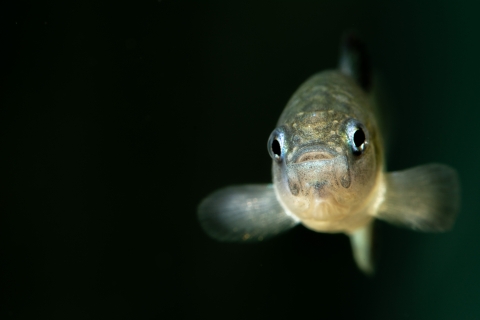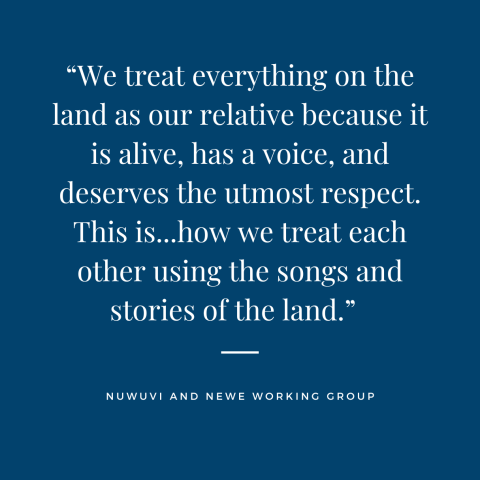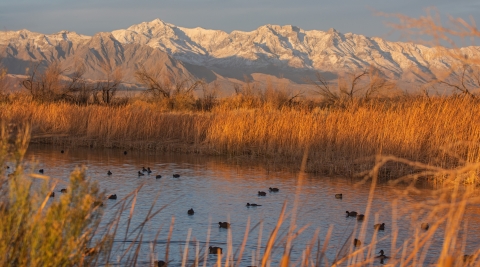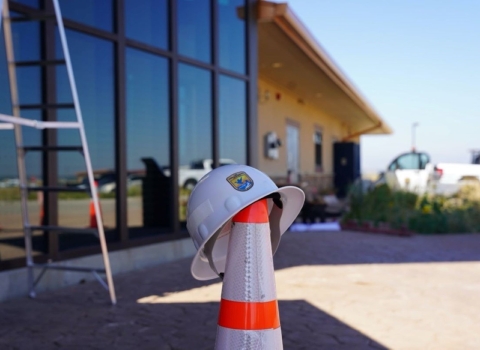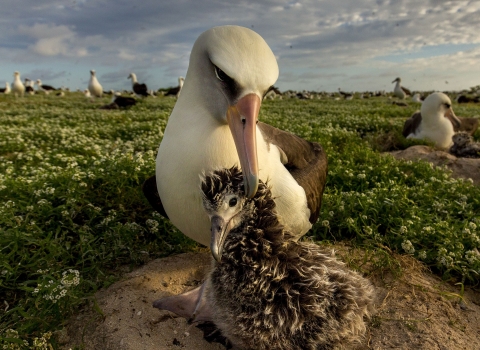“Nature unites us,” Dave Livermore, former Utah State Director for The Nature Conservancy, told a crowd gathered in the Amargosa desert on a warm Saturday. “It’s something that draws us together, just like we’re drawn together here at Ash Meadows.”
On April 20, members of the local community joined the U.S. Fish and Wildlife Service, The Nature Conservancy, members of the Newe (Western Shoshone) and Nuwu/Nuwuvi Tribes (Southern Paiute/Chemehuevi) and a broad array of partners to celebrate a unique desert oasis, the Ash Meadows National Wildlife Refuge. Shaded from the hot desert sun, supporters took turns reflecting on its origins.
Ash Meadows National Wildlife Refuge was established 40 years ago, when The Nature Conservancy purchased 12,613 acres slated for development and transferred them to the U.S. Fish and Wildlife Service. “They recognized the immense value of Ash Meadows,” said Kaylee Allen of the U.S. Fish and Wildlife Service. “And it’s thanks to their vision, and that of many other partners, that we’re here today.”
Named for the abundance of ash trees once found in the area, the refuge represents a rare confluence of resources. Fossil water contained in ancient underground aquifers discharge thousands of gallons of geothermally warmed water per minute into Ash Meadows, supporting an abundance of rare species. At least 26 species found on the refuge live nowhere else on earth.
These rare species have carved out a niche for themselves in an often unforgiving habitat. But it hasn’t been an easy task.
A feisty fish
Amid the dry landscape of the Amargosa Desert, a geothermal pool filled with simmering 90-degree water provides an unlikely home for the Devils Hole pupfish. Named for the playful way they interact, the critically endangered pupfish feed and mate on a shallow shelf within the cavernous depths of Devils Hole.
In the 1970s, groundwater pumping threatened the pupfish with extinction. Scientists and advocates sent petitions to the U.S. Department of the Interior, prompting the formation of a special task force. By 1976, a lawsuit requiring minimum water levels for Devils Hole had reached the U.S. Supreme Court. The landmark ruling in Cappaert vs. The United States protected the groundwater system that supports Devils Hole, a detached unit of Death Valley National Park. Eight years later, The Nature Conservancy struck a deal to purchase the surrounding land.
Since the refuge was established, the Devils Hole pupfish have faced numerous challenges. In the 1990s, their population numbers crashed to a perilous 35 individuals. But thanks to ongoing work by a team of dedicated partners, today their population numbers remain steady. In 2022 scientists counted 263 Devils Hole pupfish, the highest count in 19 years.
“I fell in love with the little feisty pupfish, defending their corner,” said Mauricia Baca, Nevada State Director for The Nature Conservancy. “Sometimes I think we need to channel our inner pupfish, especially considering some of the challenges we face.”
Songs and stories of the land
The Ash Meadows conservation story actually begins much earlier. For thousands of years, Newe and Nuwu/Nuwuvi lived in Ash Meadows and managed the abundant resources. They interacted with numerous animals, including mule deer, mountain sheep, jackrabbit, tortoise, chuckwallas and various birds, as well as gathering resources like pine nuts and mesquite beans. They also farmed various crops – squash, corn, beans and melon – while harvesting hundreds of medicinal plants for healing. There are areas they continue to return to each year for resources, which are managed with respect, so they continue to provide what they need. Many of these traditions persist today and many are mixed with other strategies to live in a culturally appropriate manner.
The Tribes stewarded the lands for millennia, and they continue to work in partnership with the U.S. Fish and Wildlife Service, incorporating Tribal ecological knowledge to protect the delicate ecosystems. In 2010-2012, the seven Nuwu/Nuwuvi Tribes partnered with the Desert National Wildlife Refuge Complex to identify areas of similarity in ecological knowledge systems and management techniques.
Putting the system back together
In 2013, the Ash Meadows Fish Conservation Facility opened for business. The facility holds a 100,000-gallon tank that includes a replica of the Devils Hole shelf. Facility staff work with partners from the National Park Service to collect eggs, aquatic invertebrates and algae directly from Devils Hole. Scientists aim to establish a self-sustaining population of Devils Hole pupfish.
An invasive species is any plant or animal that has spread or been introduced into a new area where they are, or could, cause harm to the environment, economy, or human, animal, or plant health. Their unwelcome presence can destroy ecosystems and cost millions of dollars.
Learn more about invasive species . Credit: Pahrump Photography
The Service is also working with partners to remove aquatic invasive species from the refuge, which threaten native species like the Amargosa pupfish. Using environmental DNA (eDNA) for early detection of invasive species, the refuge will soon be able to intervene before invasive populations become established. The upper reaches of Crystal Spring, which produces 2,800 gallons of water per minute, has been restored and is almost completely free of invasive species.
“We have worked to put this system back together,” said Cynthia Martinez, chief of the National Wildlife Refuge system. “Places like Ash Meadows prove that when we come together with a common mission, we can safeguard wetlands and reverse the damages done.”
The refuge also aims to connect people with the landscape, helping visitors understand the refuge's significance and how they can help maintain it for future generations. The 11,000 square foot visitor center includes interpretive displays and information about responsible recreation. On the 40th anniversary of the refuge, over 100 visitors perused the interactive displays.
“I know this is a place we will always be able to come back to and tell our stories,” Cynthia said.
Taking the next step together
Like many facing middle age, on its 40th birthday the refuge’s advocates are taking stock of the hurdles they’ve overcome and keeping a watchful eye on the road ahead. Threats to groundwater, invasive species and the onerous task of rehabilitating extensively altered habitats are just a few of the challenges lying ahead for the refuge.
“It’s important to take time to celebrate those on whose shoulders we stand, so that we can take the next step together,” said Andrew Strain, chair of The Nature Conservancy’s Nevada Board of Trustees. “I think we’re ready for that next challenge.”



